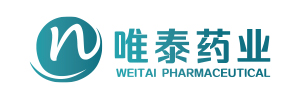
 Audited Supplier
Audited Supplier
In This Store
Category:Natural Extracts > Nutrition & Health Product Raw Materials
Product Name:Riboflavin
CAS No.:83-88-5
Standard:USP
Price(USD):Negotiable
Company:Hangzhou Weitai Biological Pharmaceutical Co.,Ltd.
Grade: Food Grade
Factory Location: 227 Zhangshan Road, RenHe Industrial Park, Hangzhou, Zhejiang China
Main Sales Markets: North America,Central/South America,Western Europe,Eastern Europe,Australasia,Asia,Middle East,Africa
Sample Provided: no
Payment Terms: T/T
Riboflavin
Vitamin B2, also called riboflavin, is slightly soluble in water and is stable when heated in a neutral or acidic solution.
CAS No. : 83-88-5
Used in wheat flour, dairy products, soy sauce. It is also used for rice, bread, biscuits, chocolate, sauces and so on. Sometimes used as a pigment.
The recommended daily intake for adults is 1.2-1.7mg. 1.6mg during pregnancy, 1.8mg during the first 6 months of breastfeeding and 1.7mg in the following 6 months; People who are often stressed should increase their intake. The most common vitamin deficiency in the United States is B2.
Effectiveness: Interacts with other substances to help metabolize carbohydrates, fats, and proteins.
Foods rich in vitamin B2: milk, animal liver and kidney, brewed yeast, cheese, green leafy vegetables, fish, eggs.
Nutritional supplements: There are two different uptake methods, inefficient and efficient, and the general dosage is 100mg.
Properties: This product is orange yellow crystalline powder; Slightly smelly, slightly bitter; When dry, it is not affected by diffuse light, and the solution is easy to deteriorate when exposed to light. It deteriorates faster in alkaline solution or in light, and its saturated solution is neutral to litmus.
This product is almost insoluble in ethanol, trichloromethane or ether, but has a high solubility in dilute alkali solutions.
This product is relatively stable to heat and acid, in neutral and acidic solutions, even a short time of autoclaving will not be destroyed.
It is particularly vulnerable to UV damage and unstable to reducing agents.
Uses: nutritional supplement; Colorant. The amount of riboflavin required, like thiamine, depends on a variety of factors, such as high temperature, food composition, etc. Low temperature and high temperature demand are relatively high. If thiamine is insufficient in food, the requirement of riboflavin is increased. It can be used in cereal and its products, liquid drinks, milk drinks, infant food, salt, solid drinks, prepared wine, nutritional solid drinks, gum based confectionery, solid drinks containing milk, soy milk powder, soy powder, ready-to-eat breakfast cereals, jelly, cocoa powder and other flavored nutritional solid drinks, maternal formula milk powder, children's formula milk powder, convenient flour packets, maternal formula powder.
Limit: 1.GB14480-94: cereals and their products, beverages, milk and milk beverages, liquids 3~5mg/kg; Infant food 4~8mg/kg; Salt 100~150mg/kg.
2.GB 2760-2002 (mg/kg) : prepared wine 1~2; Nutritional solid drinks 10~17; Ready-to-eat breakfast cereals 7.5~17.5; Jelly 1.0~7.0; Cocoa powder and other taste nutritional solid drinks 10~22 (the corresponding nutritional milk drinks according to dilution to reduce the amount of use); Solid drinks 10~13, used for nutrient fortified salt (only refers to areas with serious riboflavin deficiency); Gum-based candy 16~33; Solid drinks containing milk 9~16.5; Soybean milk powder, soybean powder, 6~15; Soy milk, soy milk, 1~3.
3.FAO/WHO (1988) : synthetics are limited to use as pigments.

Contact Us
Tel: (+86) 400 610 1188
WhatsApp/Telegram/Wechat: +86 13621645194
Follow Us:




 Pharma Sources Insight January 2025
Pharma Sources Insight January 2025


